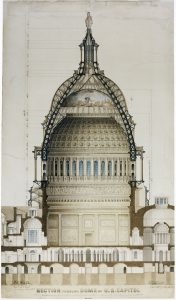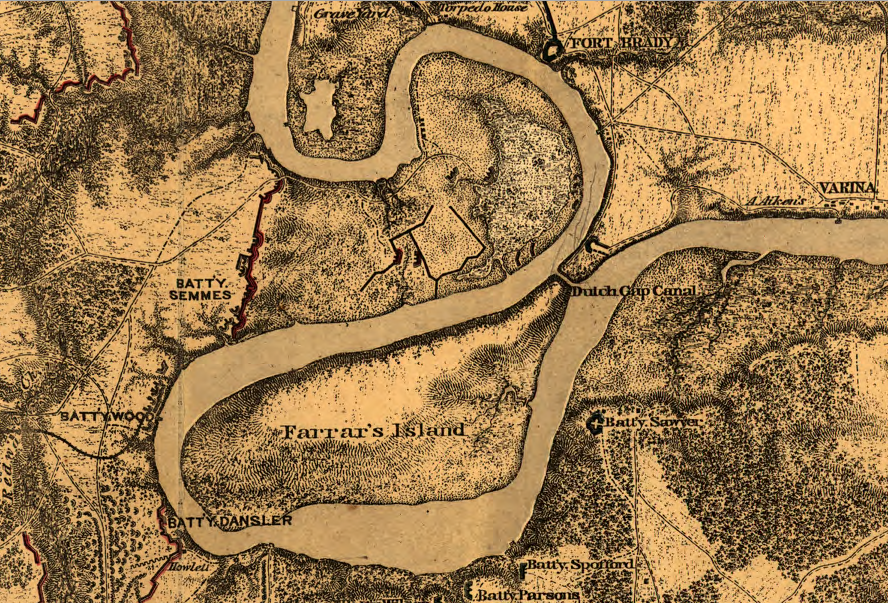Bucklin’s Hospital & Camp: “A Standing Order Until Countermanded” (Part 14)
In Hospital and Camp, A Woman’s Record of Thrilling Incidents Among the Wounded in the Late War by Sophronia E. Bucklin
It’s Week 14 of our read-along with extra historical notes and images. If you want to catch up on the chapter notes, just click here for the collection in the archive. This week we are looking at chapters 27 and 28.

Chapter 27
As Nurse Bucklin left Washington and headed south to the Peninsula and City Point again, she saw the “marble buildings and spires” of the capital. President Lincoln had insisted that dome construction work on the Capitol Building continue, despite the war, and by 1864 the statue of Liberty had been hoisted to the top of the new dome, though the final interior scaffolds would not be removed until 1866.
Her next field hospital assignment was at Bermuda Hundred, not far from General Butler’s Headquarters. The hospital was well-organized, and the surgeon in charge gave the army nurses authority to request supplies for the good of the soldiers, a marked contrast to previous situations and interactions.
“You can have them for any‘thing you need to make the soldiers comfortable,” he replied, and desiring me to accompany him to the full diet cook house, he said to the attendants, “Give Miss Bucklin anything she calls for from this cook house, and consider this a standing order till countermanded.” Turning to me, he said, “ The other nurses can have the same if they will only ask for it.”
Pine trees were set all through the centre of the ground, and in the front and rear of the wards; arbors were built, making a beautiful shade over the walks, and, over the door-way of the tents, arches were formed with evergreens, having corps badges suspended from the centre. Paper lanterns were made of variegated material and hung out at night to guide us on our way—— their cheerful appearance reminding us of a village illumination in which Chinese lanterns were universally used.
Here, Bucklin worked with the special diet kitchen and did not lack food. She remembered making pies for the soldiers and also had an abundance of “rice, corn-starch, sugar, nutmegs, lemons, condensed meats, eggs, condensed milk, flavorings, and ice from the dispensary.” Fresh fruits and butter were also available.
The Sanitary Commission and Christian Commission played their part, finally out of “control of the despotic surgeon,” and filled requests for fruits and “other delicacies” as their supply chains also became more permanent as the transportation system to City Point was more firmly established.
At one point, Bucklin thought she would be leaving the hospital, but the surgeons, other medical staff, and patients signed a petition for her to stay!
Chapter 28
This chapter starts off with an incident with a drunken soldier who offered to buy Nurse Bucklin a silk dress. Realizing he was intoxicated and holding to her principles of never accepting personal gifts from a soldier, she left him but accidentally said something about the circumstance to an officer…which led to the soldier’s arrest. At least at that City Point hospital, the army regulations against drunkeness were enforced. Feeling terrible, Bucklin had an opportunity to confess that she—not the soldiers’ comrades—had been the one to land him in the guardhouse. He seemed to have no ill-feelings toward her…but the promised silk dress never arrived.
Bucklin took care of several wounded Confederates in this period and left this record about one man’s loyalty and predicament:
I had still another Southern man, a Virginian, loyal to his country, who had been compelled to enlist, or be shot down. Thinking he might avoid killing any one in action, by lifting his gun out of range, he went into the ranks, and in the ?rst battle was taken prisoner and paroled. ‘ He remained home for fourteen ‘months, when he was driven out again, being hit by a minnie ball on the bottom of his foot before he had ?red his gun. ‘ ‘A willing prisoner of war, he was brought to our hospital.
Sunstroke (also called heat stroke, but not to be confused with heat exhaustion) affected many Civil War soldiers. So what is it? Usually brought on physical exertion in heat waves and high humidity, heat stroke occurs when the body temperature is greater than 104 degrees. Lack of sweat, red skin, headache, confusion, and dizziness are common symptoms. If the symptoms are not treated, serious complications can occur, even death. Treatment—during the Civil War and in the modern era—include cooling the body, resting the shade, cool water bath, ice, and cold drinks.

Bucklin mentions the digging and explosions at Dutch Gap. This refers to a canal that Union troops—mostly USCT—tried to dig through a bend in the James River at the place called Dutch Gap. The goal was to create a channel and allow Federal ships to by-pass Battery Dantzler and get closer to Richmond. Meanwhile, Confederate artillery shells landed in the work zone, increasing the project’s danger and lack of success. In a rare moment of military commentary, Bucklin wrote: “It is not for a woman to question the ability, or inquire into the motives of a military general, but I am con?dent that the sufferings and the fearful slaughter of the men should have been su?icient to cause the abandonment of the work.”
To be continued next weekend…